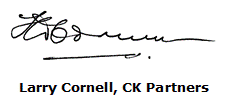It has taken a long time for the economic commentators, business leaders and Governments in Australia to get it! Seemingly in blissful optimism, their belief has been that a resource-based survival, underpinned by a never-ending Chinese or Indian import demand would protect us; that the notion of de-coupled economies was forever defensible; and that we would somehow remain immune to what was happening ‘over there’. Only recently have such commentators and leaders disavowed themselves of the belief that we would defy economic gravity and not go into recession, however we choose to define recession.
This is a ‘global’ crisis because no economy is immune from it. No one is immune from it because it is a financial crisis driven by extensive, pervasive and highly leveraged financial linkages among all financial institutions from the US Federal Reserve to the IMF and World Bank that in turn support so many third-world and developing economies. Each domestic economy is suffering from severe contraction in its vital exports and corporate earnings, from resultant rising unemployment and ultimately from their Governments’ worsening ability to earn tax revenue and hence fund their ballooning debt servicing commitments. In short, the vital majority of all western economies are at the brink of bankruptcy or in acute distress from having over-borrowed.
Many now believe that this grim picture of the world’s economies and indeed, of Australia’s economy will last well into 2010. The question is: what are corporate businesses doing to make sense of this dire environment, to understand what is driving the severe economic contraction, and positioning themselves to recognise the signs and timing of a real and sustained economic recovery?
Unfortunately, the complication for many Boards and senior management teams is in understanding how to relate directly and usefully all the macroeconomic information that comes across their desks or is delivered over a glass of Chardonnay at a ‘Briefing’ lunch. Management and Boards are inundated with macroeconomic graphs, data and reports. But you ask: how does this help me make better business decisions?
A further complication comes from not knowing which ‘key’ economic indicator(s) to follow … the press and their commentators seem to focus almost exclusively on ‘coincident’ indicators. These tell us how we feel today and reflect what cash we have in hand (earnings, unemployment levels, cost of living, etc.) and the state of our financial assets (house prices, interest rates, the stock market and hence the value of our superannuation).
Here at CK Partners, we make a clear distinction between these coincident indicators that measure or reflect consumer confidence, consumption and GDP growth and leading indicators that drive economic growth.
Over the past two years, we have been working with our clients to address the above concern, namely, we have developed a systematic framework for sorting this endless waterfall of macroeconomic data to allow management to improve the quality of their business planning and competitive decision making. Most of all, we want to ensure our clients avert big mistakes that will arise in the current environment of thinking that any positive signal in the economy is the start of the recovery when in fact it is not; this is the ‘false dawn’.
We also want to ensure our clients see the early warning signals from leading economic indicators that show 9-18 months out when an economic upturn is first signalled to occur in their industry. This macroeconomic forecast is systematic, based on quantitative leading indicators – not opinion – and tailored to specific business and industry drivers, and hence business plans.
Typically, business plans, competitive strategies and M&A due diligence pay scant attention to the macro-economy, its impact on future revenue streams, and potential downside scenarios. This might have been possible in the past but it is suicide to ignore these drivers now. Leading indicators of the macro-economy must form a vital part of any business plan or due diligence. Historical data and analysis is useful but, like the rear view mirror, it is mostly useful if you want to know where you’ve been, not where you want to be.
To avoid a major strategic mistake such as investing before a false dawn and to exploit the leading indications of a real economic recovery we adopt a three step process:
- Develop a robust, quantitative contextual basis of the macro-economy identifying the leading indicators of deepening recession or economic recovery;
- Identify and quantify the key external and internal drivers, and model the linkages to your specific business; and
- Simulate, analyse and evaluate downside (and upside) outcomes and risks from the impact of specific business and economic scenarios.
If you would like to learn more about our methodology and its application to your business then contact us via the Contact Form.

